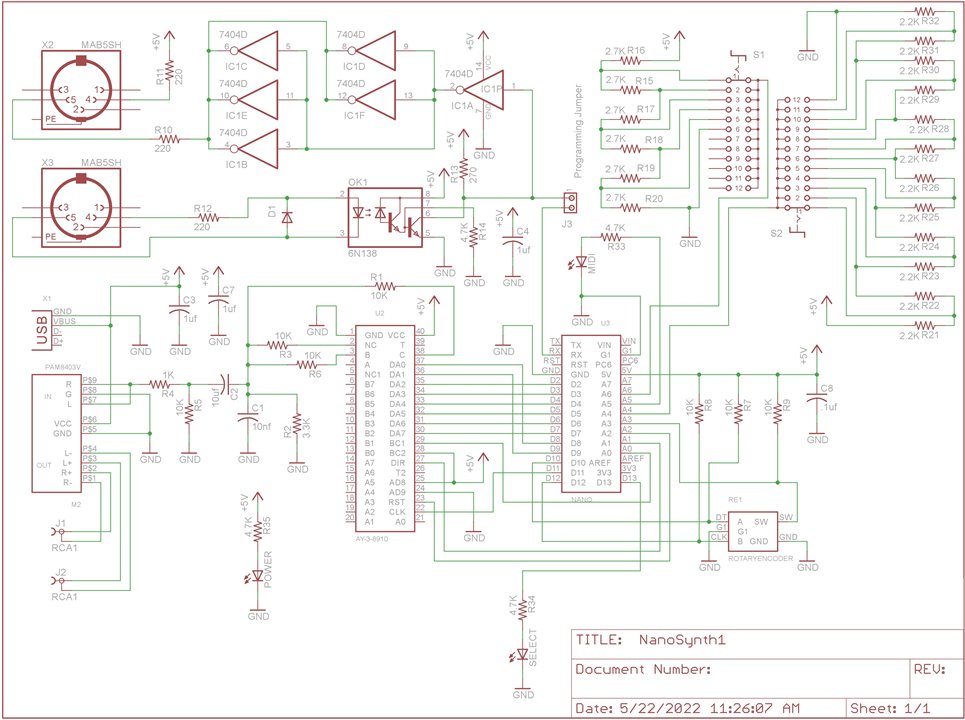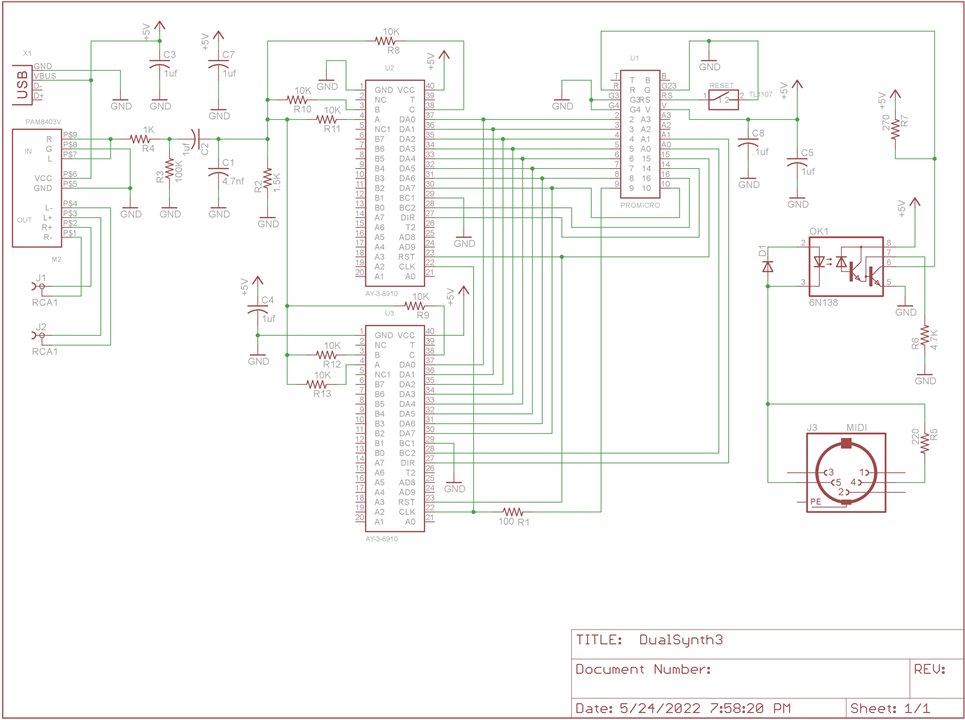Music makes the world a better place - because everyone likes music. There are very few statements that so many people would agree on. I'm not the most musical person but even I have had a long fascination with music and how I can use what talent I have to make enjoyable music. This project has its roots way back in the earliest days of the video game phenomenon when I became interested in electronic generation of music. One project I had a lot of fun with was building a sound synthesis system from a General Instruments programmable sound generator, (Ay-3-8910) which I connected to my Aim 65 computer to make music and sound effects.
I recently noticed that these chips were still available and people were connecting them to Arduinos, so I embarked on a journey to explore some of these efforts. To do this I designed a couple of PCBs similar enough to other people's circuits that their software would run on my PCB's without much modification. I added audio amplifiers and a few other features that I thought would be useful.
The first one I built was based on a project called TB-AY-3, which used an Arduino Nano and some rotary switches to allow exploration of the sound synthesis features of the General Instruments chip. This design looked like it would be useful to explore percussion sounds. I discovered that the code was a bit too large for my Nano, so I had to re-write the code a bit to shrink its size.
I also needed to use MIDIOX to figure out which MIDI events mapped to which sounds.
I am definitely interested in percussion instruments and have other projects planned in that area, but the system I built here isn't quite as general as I wanted, so I designed another PCB, this time based on an Arduino Pro Micro, connected to two synthesizer chips to give it 6 voices. Again I tweaked the design and added hardware features like audio amplifiers and a MIDI connector.

I am pretty happy with this second design - it can handle lots of different MIDI music. Of course it isn't in the same league as modern commercial synthesizers, but then it is orders of magnitude cheaper (these chips cost less than $2) and should make it easy to test other things I may make such as a MIDI controller or a MIDI drum machine.


This video demonstrates the new cards I designed. It is always great when a card operates the way it was designed to work. The MIDI music events are being sent by MIDIeditor to the sound synthesizer which interprets the MIDI data and programs the programmable sound generator to make appropriate notes with appropriate instruments. I included some drum tracks that I have been fooling around with using Hydrogen - at the beginning and end of the video.
It is great fun to get back into making music and music electronics. Hopefully sharing the project goes a small way to helping the world be a better place.
Relevant Links:
215 Instrument MIDI Synthesizer
community.element14.com/challenges-projects/project14/betterworld?ICID=P14main-featured-widget
en.wikipedia.org/wiki/General_Instrument_AY-3-8910
